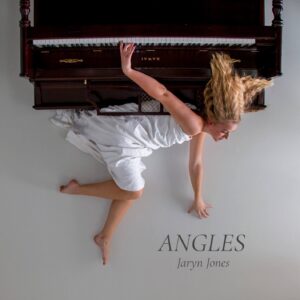Lonely. “Kodama” starts out lonely. It feels empty and bitter and cold, and the track stretches out before you in a way that feels daunting. Remy Boccalatte’s other work is similarly contemplative. It’s music that offers questions, occasionally provides answers, but mostly wanders. “Kodama” takes a contemplation on the natural world and communication and gives it a haunting air.
We open with frigid strings, a soft, plinking piano, and gentle vocals. They aren’t addressed to the audience, however. Boccalatte sounds as though they are speaking, melodically discussing the trail we’ve stepped on. He sounds distant throughout, but when the chorus creeps in, he embodies those whipping winds with a layered held note. It echoes and rises into this howl. The violins are insistent and driving, pecking along over this muted percussion. After the second chorus, we break into this twangy electric guitar that sounds powerful and energetic: much in contrast to the creepy and haunting air we’ve been brought through. The percussion properly makes its appearance now, with crashing hi hats and a sharp, punchy drum beat. It’s a release of tension, a departure from the more ethereal sound. It’s less of a glide now, and more of a sprint. With a sound conclusion, we are played out by the violins and piano again, ending with another howl from Boccalatte.
Remy Boccalatte’s work is often intimate, as was the case on his solo debut Swimming over Faultlines. There’s a great focus on cultivating an atmosphere for the lyrics and story of the song to rest inside. And yet at the same time, the vocals on “Kodama” become another instrument that creates the spooky sound. There’s a bit more of a departure here into ambient music, which is quite fitting for a single whose muse is the natural world.
“Kodama” is lonely and haunting. The kodama is lonely and haunting too: a spirit or yokai that inhabits the trees in Japanese folklore. The kodama are the spirits of the trees. “Kodama” is the spirit of the trees too: it is haunting and gentle and inquisitive, watching the listener as they drift along.
The music video for “Kodama” was shot during your trip to Japan—did the song “Kodama” come before that hike, or after?
“Kodama,” musically, came after the hike but the lyrics started to manifest at the time, to try and create a rhythm to keep plodding through quite deep snow. For me, singing (even internally) helps to distract my mind from any physical exertion that would ordinarily make a hike take its toll mentally. In the snow though, there was something so very subtly overwhelming and reflective about it all. It is rare that I would be happy enough with poetry on its own to then write music for it; usually, it’s the other way around.
Much of your music deals with journeys, emotional and physical and spiritual. Does this reflect your own journeys in life, or would you say you’re still on the road?
Oh, sure. The majority of the content is a reflection of what I have been feeling for a long enough period to work into a cohesive track. There is quite a distance from when a track is conceived to its final production though, so sometimes I find that I am clearing away chapters or feelings that might be a year old or so already, so if the tracks stick with me enough during that process, I generally see the value in their completion. Tracks encompass all of those dimensions, with some becoming more of a focus as the song develops. So, I hope that means that they come across as considered, as I wrote pretty slowly. Am I still on the road? Aren’t we all? There’s so much to take in, especially when you’re walking beside it.
What instrument or instruments do you think is the most impactful in your work?
I can’t not start with guitar, for a long-standing love, and I guess I prefer stringed instruments, acoustic piano etc., and have appreciated listening to more tracks where they focus more, and then consider where they might fit with explorations of other instruments. The experimentation with other instruments, even just as features, is now also a consideration when writing. Also, I would hope that vocally I have been able to convey something as close to what I’m envisioning too, as part of the landscape.
Do you have any other hikes that could make their way into future songs? Would you ever revisit a trail to help capture some kind of mood for a song?
Oh absolutely. There is some great terrain close by, at least within 2 hours’ drive, so there is plenty to explore when the motivation/time is there too. Actually we have a segment for the label I run, False Peak Records, that is kind of a representation of that same idea. It’s a video interview series called “On The Trail” where we take featured artists out on a walk. Here is an example with labelmate, K.L. Mazlin.
Sometimes the time between visiting a known trail, particularly if there are numerous options relatively close, can be many years. For me anyway, often whatever impetus drives me to do one will invariably have been dealt with by the time I retry it. Thus, often revisiting a trail will be a new experience and a clean slate so to speak, so who knows what will be evoked during those times. In other situations, if the experience is memorably positive, it becomes a favorite and of course I will revisit to tap into a mood or feeling for a track.







